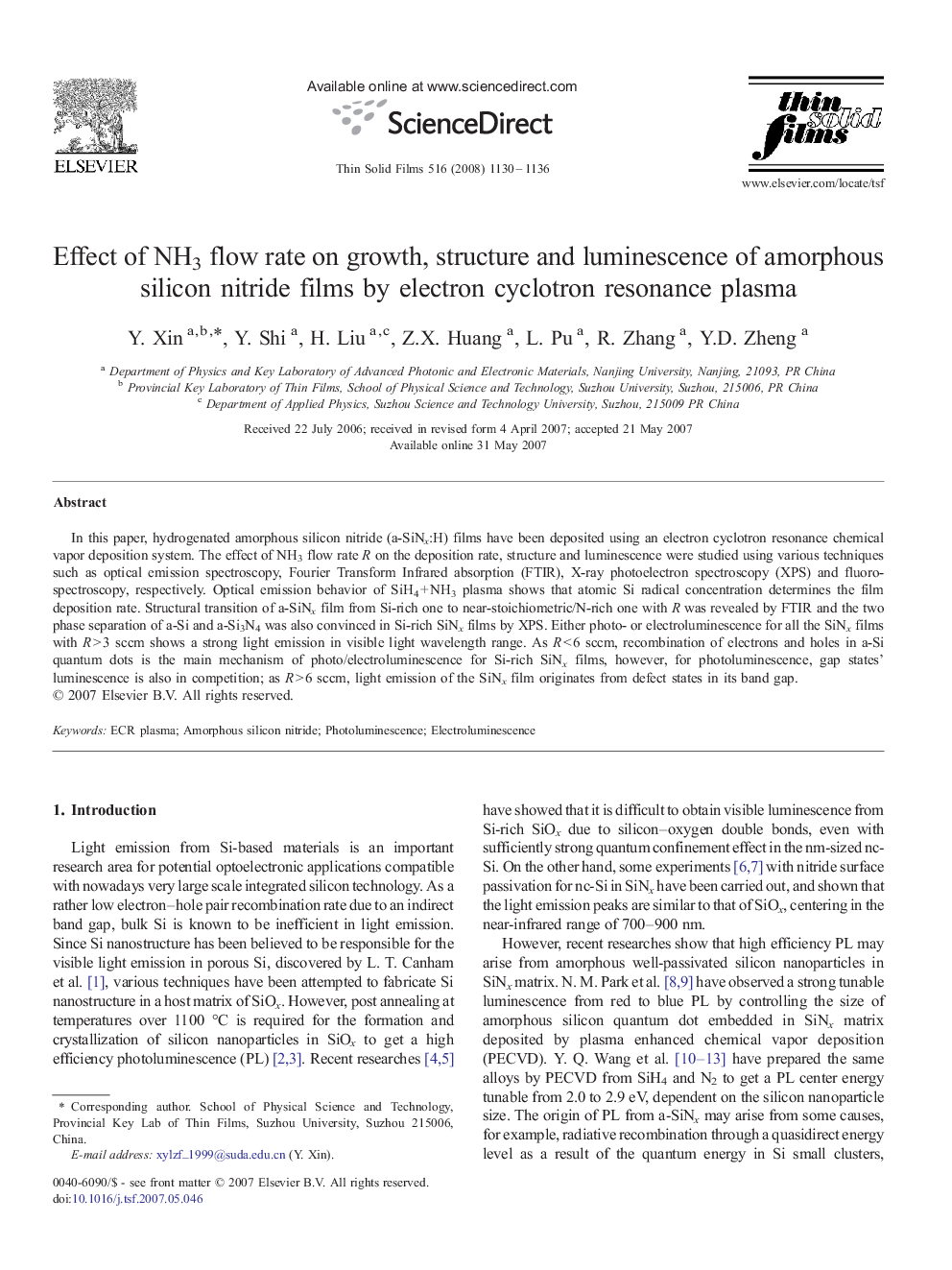| Article ID | Journal | Published Year | Pages | File Type |
|---|---|---|---|---|
| 1675777 | Thin Solid Films | 2008 | 7 Pages |
In this paper, hydrogenated amorphous silicon nitride (a-SiNx:H) films have been deposited using an electron cyclotron resonance chemical vapor deposition system. The effect of NH3 flow rate R on the deposition rate, structure and luminescence were studied using various techniques such as optical emission spectroscopy, Fourier Transform Infrared absorption (FTIR), X-ray photoelectron spectroscopy (XPS) and fluoro-spectroscopy, respectively. Optical emission behavior of SiH4 + NH3 plasma shows that atomic Si radical concentration determines the film deposition rate. Structural transition of a-SiNx film from Si-rich one to near-stoichiometric/N-rich one with R was revealed by FTIR and the two phase separation of a-Si and a-Si3N4 was also convinced in Si-rich SiNx films by XPS. Either photo- or electroluminescence for all the SiNx films with R > 3 sccm shows a strong light emission in visible light wavelength range. As R < 6 sccm, recombination of electrons and holes in a-Si quantum dots is the main mechanism of photo/electroluminescence for Si-rich SiNx films, however, for photoluminescence, gap states' luminescence is also in competition; as R > 6 sccm, light emission of the SiNx film originates from defect states in its band gap.
